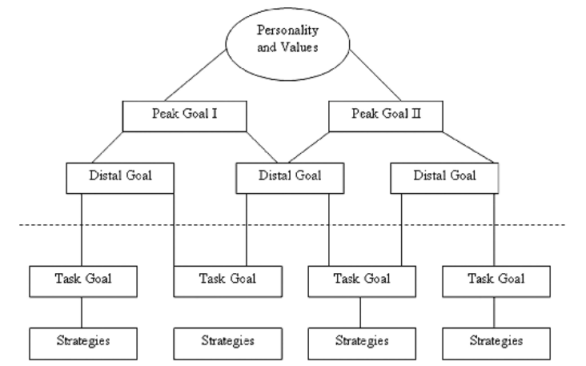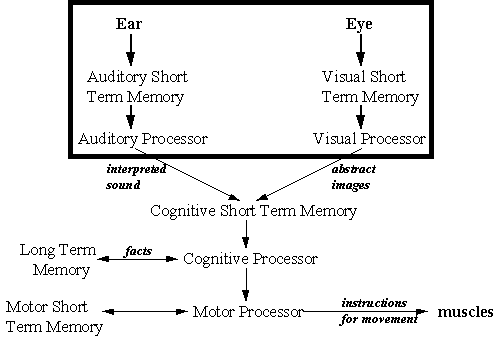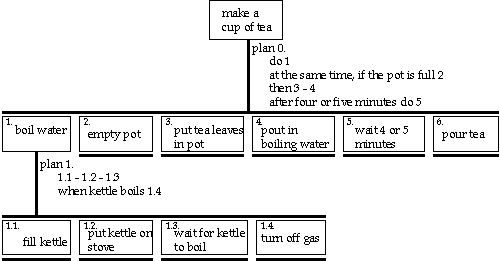UNIT 6
HCI MODELS AND THEORIES

In this, we have a great many analytical and descriptive tools available to us. There are so many ways that it can sometimes be difficult to decide which tool is most appropriate for a given task! Hierarchical task analysis (HTA) is an underused approach in user experience, but one you can easily apply when either modifying an existing design or creating a new design.
This technique has applications across a range of different problem domains, including time-and-motion studies, personnel selection, or training, and provides a broad and deep understanding of task performance. While there are core principles that guide a hierarchical task analysis, it’s possible to adapt the basic approach in a huge number of ways to support the needs of any domain under consideration.
A structured, objective approach to describing users’ performance of tasks, hierarchical task analysis originated in human factors. In its most basic form, a hierarchical task analysis provides an understanding of the tasks users need to perform to achieve certain goals. You can break down these tasks into multiple levels of subtasks. In user experience, you can use hierarchical task analysis to describe the interactions between a user and a software system. When designing a new system, hierarchical task analysis lets you explore various possible approaches to completing the same task. When analyzing an existing system, it can help you to optimize particular interactions.
- Linguistic models deal with statements as they are used to express meanings.
- Its focuses on simple operational meanings within a given conceptual commitment (existence of objects, discern ability of objects as representatives of certain concepts, characteristics of individual objects and relationships between objects), linguistic models focus on meanings corresponding to the conceptual commitment itself, regardless of the actual objects, such as what are the characteristics of concepts, how concepts are defined in terms of other concepts, and what relationships between concepts are necessary, permissible or obligatory.
- They describe individual views while statements in linguistic models describe viewpoints. Linguistic models focus at the definitions of new meanings, therefore they facilitate unconstrained communications where new meanings are defined on-the-fly.
- The flexibility of unrestricted linguistic communication comes with a price: the intended meaning needs to be unraveled from the expression, and the more complex the meaning, the more complex is the unraveling process.
- The key challenge of unrestricted linguistic communication is not so much in parsing a natural language sentence (which can be quite complex) but rather in dealing with complex meanings that are defined on-the-fly by some sentences and are used in the follow-up sentences.
- For example, we can say: “Remember the nuts-and-bolts illustrations from the previous chapter? Did you notice that there are a total of 35 nuts visible in these figures?” While humans routinely deal with the dynamic updates to the conceptual commitment, it is a barrier for machine-to-machine information exchanges.

The Keystroke Level Model (KLM)
• Buxton's 3-state model
• Based on empirical knowledge of human motor system
• User's task: acquisition then execution. – these only address execution
• Complementary with goal hierarchies
• lowest level of (original) GOMS
• six execution phase operators – Physical motor: K - keystroking P - pointing H - homing D - drawing – Mental M - mental preparation – System R - response
• times are empirically determined. Texecute = TK + TP + TH + TD + TM + TR
KLM example

Resulted from the Model Human Processor

Description of methods (or plans) needed to accomplish specified goals
- Goal: a symbolic structure that defines a state of affairs to be achieved, and determines a set of possible methods by which it may be accomplished
- Operator: elementary motor or information processing acts, whose execution is necessary to change any aspect of the user's memory or to affect the task environment
- Methods: a sequence of steps consisting of operators (or actions) to achieve the goal.
- Selection: the choice of the method is governed by the selection rules which depend upon the features of the task environment, the user and details about the goals
GOMS
- GOMS models can be applied at various level
- Description of general methods for accomplishing a set of tasks
- Unit task level, breaks users' tasks into unit tasks, and estimates the time it takes for the user to perform these tasks
- Keystroke level
- Typically GOMS starts from a single high level goal decomposed into sequences of unit tasks
- Example
GOAL: ICONIZE-WINDOW
[select GOAL: USE-CLOSE-METHOD
MOVE-MOUSE-TO-WINDOW-HEADER
POP-UP-MENU
CLICK-OVER-CLOSE-OPTION
GOAL: USE-L7-METHOD
PRESS-L7-KEY]
- GOMS models are expressed using the NGOMSL language
- Selection rules are expressed using
IF <condition> THEN goal accomplished
- The last step of a method is return with goal accomplished'
- Outcome is a hierarchy of
- Tasks
- Sub-tasks
- Actions
- Plans (in what order and under what conditions sub-tasks are performed)
- Based on structure chart notation
- Can be represented textually as well
Hierarchical task analysis example: Chart notation

HTA can also be written as a list like this:
0. To clean house
1. Get vacuum cleaner
2. Clean rooms
2.1 clean hall
2.2 clean living rooms
2.3 clean bedrooms etc
3. Empty dust bag
4. Put vacuum cleaner away
Plan 0: do 1,2,4 in any order
when dust bag full, do 3
Plan 2: do any of 2.1, 2.2, 2.3 in any order depending on which rooms need cleaning.
- Making manuals/training
- Guiding system design
- Grouping tasks for the interface design
- Predicting use of the system
Dialog is the syntactic level of human-computer interaction; it is rather like the script of a play, except the user, and sometimes the computer, has more choices.
- Notations used for dialog description can be:
- Diagrammatic: easy to read at a glance
- Textual: easier for formal analysis.
- The dialog is linked:
- To the semantics of the system, what it does
- To the presentation of the system, how it looks.
- Formal descriptions can be analyzed:
- For inconsistent actions
- For difficult to reverse actions
- For missing items
- For potential miskeying errors.
It is any form of communication between two or more individual people who interact and/or influence each other via separate computers through the Internet or a network connection - using social software. CMC does not include the methods by which two computers communicate, but rather how people communicate via computers.
Advantages:
1. Computer mediated communication breaks down geographical barriers to communication enabling collaboration through communication over distance.
2. People can exchange, store, edit, broadcast, and copy any written document. They can send data and messages instantaneously, easily, at low cost, and over long distances.
It is a paradigm in which the processing of information is linked with each activity or object as encountered. It involves connecting electronic devices, including embedding microprocessors to communicate information. Devices that use ubiquitous computing have constant availability and are completely connected.
It focuses on learning by removing the complexity of computing and increases efficiency while using computing for different daily activities.
It is also known as pervasive computing, everyware and ambient intelligence.
The main focus is the creation of smart products that are connected, making communication and the exchange of data easier and less obtrusive.
Key features:
- Consideration of the human factor and placing of the paradigm in a human, rather than computing, environment
- Use of inexpensive processors, thereby reducing memory and storage requirements
- Capturing of real-time attributes
- Totally connected and constantly available computing devices
- Focus on many-to-many relationships, instead of one-to-one, many-to-one or one-to-many in the environment, along with the idea of technology, which is constantly present
- Includes local/global, social/personal, public/private and invisible/visible features and considers knowledge creation, as well as information dissemination
- Relies on converging Internet, wireless technology and advanced electronics
- Increased surveillance and possible restriction and interference in user privacies, as the digital devices are wearable and constantly connected
- As technology progresses, the reliability factor of the different equipment used may be impacted
Voice-Guided User Interface
Voice interaction is going to go way beyond setting appointments and surfing the web. It’s predicted that, in the next 5 years, adoption rate of speech recognition will be over 80%. This makes a lot of sense when you consider how much smaller our screens are getting. With less screen real-estate, interfaces will become much harder to navigate. Touch will likely still be king on mobile for a long time to come, however, voice certainly promises a deeper and more ubiquitous method for interacting with our devices.
Virtual/Augmented Reality
The VR (virtual-reality) landscape is going to look a lot more interesting in the next decade.
With Facebook’s purchase of Oculus and Microsoft entering the VR arena with HoloLens, the competition is really starting to heat up.
These headsets might eventually render TVs obsolete. After all, why would you watch your favorite football team through a rectangle box when you could have them projected into your living room.
Wearables
The Apple watch has already introduced some really unique interactions like the digital crown and the ability to view another person’s pulse. In the coming decade, these devices will become cheaper, more functional and less dependant on your phone, which will in turn make them far more adoptable.
References:
- Ben Shneiderman; Catherine Plaisant; Maxine Cohen; Steven Jacobs (29 August 2013). Designing the User Interface: Strategies for Effective Human-Computer Interaction. Pearson Education Limited. ISBN 978-1-292-03701-1.
- Donald A. Norman (2013). The Design of Everyday Things Basic Books. ISBN 978-0-465-07299-6.
- Jeff Johnson (17 December 2013). Designing with the Mind in Mind: Simple Guide to Understanding User Interface Design Guidelines. Elsevier. ISBN 978-0-12-411556-9.
- Alan Cooper; Robert Reimann; David Cronin; Christopher Noessel (13 August 2014). About Face: The Essentials of Interaction Design. Wiley. ISBN 978-1-118-76658-3.
- Alan Cooper (1 January 1999). The Inmates are running the Asylum, Sam’s. ISBN 978-0-672-31649-4.
- John M. Carroll (21 May 2003). HCI Models, Theories, and Frameworks: Toward a Multidisciplinary Science. Morgan Kaufmann. ISBN 978-0-08-049141-7.
- Alan Cooper, Robert Reimann, David Cronin, Christopher Noessel, About Face: The Essentials of Interface Design, Wiley India, ISBN : 9788126559718,4th Ed
- Rogers, Sharp, Preece, Interaction Design: Beyond Human Computer Interaction, Wiley India, ISBN: 9788126544912,3ed
- Wilbert O.Galitz, The Essential Guide to user Interface Design, Wiley India, ISBN: 9788126502806